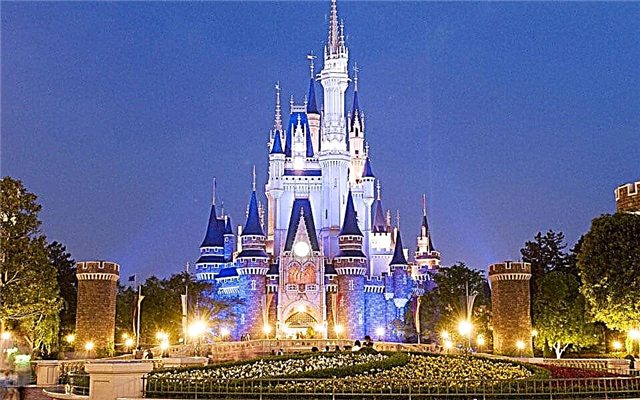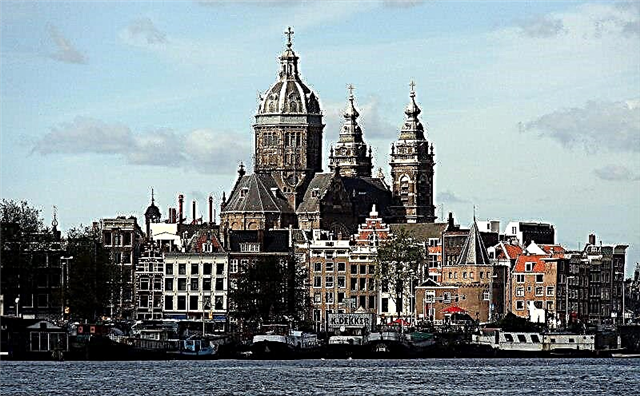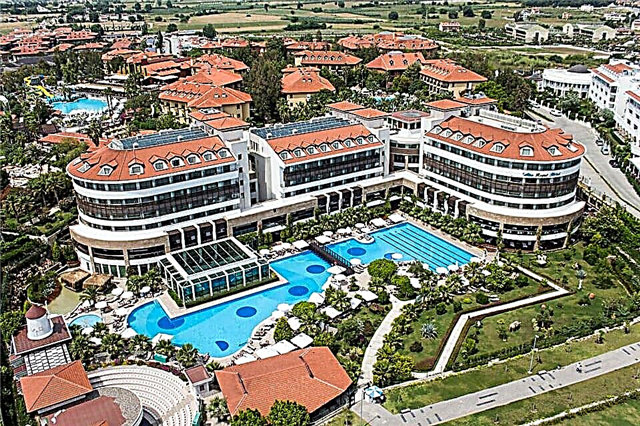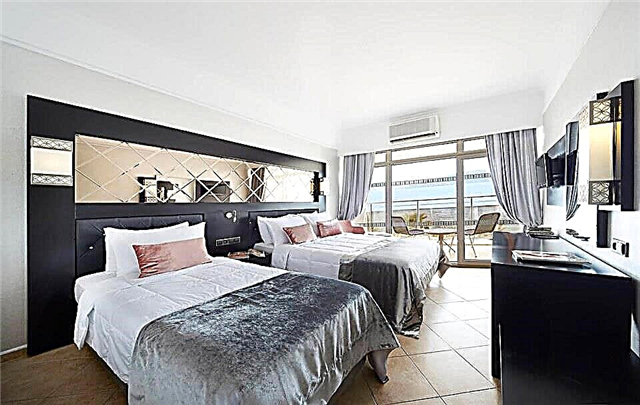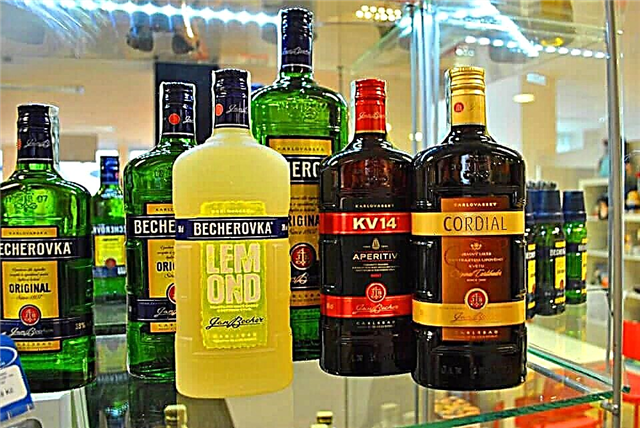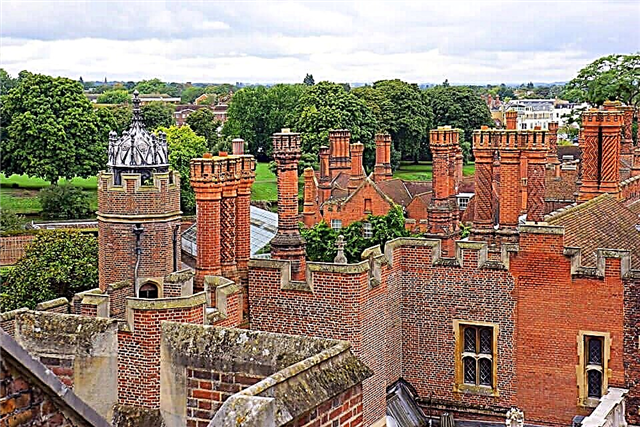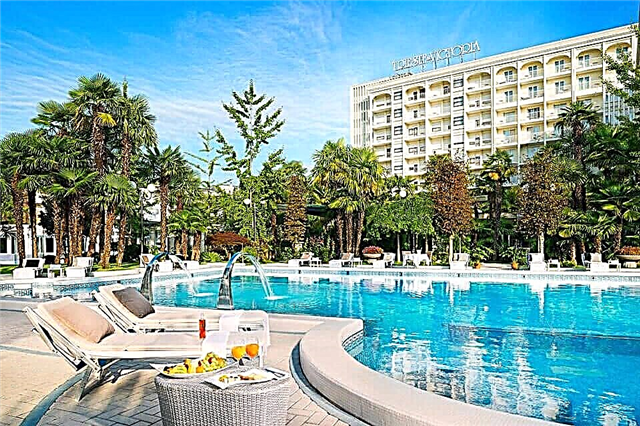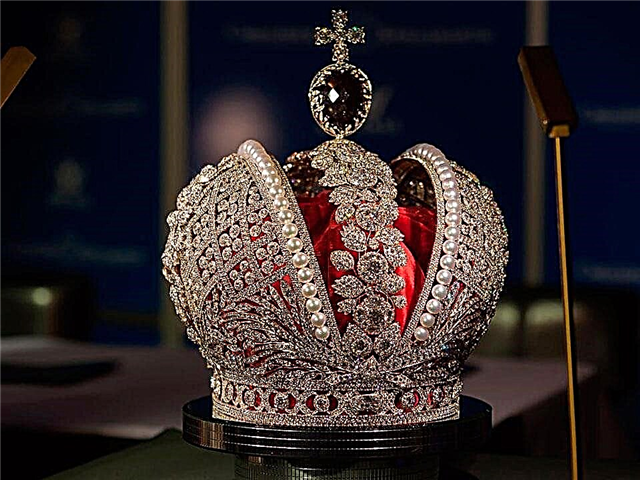The white-stone beauty, the first mention of which in the chronicle dates back to 1147, is a city of museums, ancient and modern. Visiting them, you understand how rich and varied the history of the Russian capital was. Contradictory feelings arise in the soul when you see the untold treasures of the Russian tsars and those standing at their throne. Gratitude for the fact that they were able to leave such wealth as a legacy to other generations, and indignation at the extent to which they were allowed.
But the feeling of gratitude wins because each of the visitors can now see exhibits of incredible beauty. The expositions reflect the history of not only the city, but the whole of Russia. So, we offer an overview and a list of the best museums in Moscow that you must visit.
Diamond fund

The main treasury of the Russian state, located in the Kremlin in the museum of the same name, is the most visited place in Moscow. All year round there are queues of people wishing to look at the collection of unique jewelry. Even Peter the Great issued a decree on the strict preservation of precious luxury items of royal families for the state. At first, everything related to treasures was kept in the Diamond Cabinet of the Winter Palace.
During the First World War, they were transported to the Kremlin, where they stayed for 8 years before an expert examination was carried out by a special commission. She determined the true value of the items and made a decision on the inviolability of the collection and the need to include it in the USSR Gokhran.
The rules for visiting the Diamond Fund provide for a pass through a metal detector, so you should not come here with unauthorized items. All exhibits are housed in glass showcases; excursions are usually accompanied by a guide who briefly tells about the history of this or that precious exhibit.
In the center of the hall, in 4 showcases, there are gold (100) and platinum (20) nuggets of amazing sizes and outlines, similar to strange animals or mythical creatures. One of them was named "The Devil" for its external resemblance. Among the gold nuggets, there is a real giant "Big Triangle", weighing 36 kg and is by far the largest nugget in the world.

The hall of royal relics amazes with the brilliant splendor of its exhibits: royal regalia, awards, gifts. The Great Imperial Crown, made on the occasion of the coronation of Catherine the Great, evokes general admiration here. The silver crown is adorned with 4936 diamonds and large selection of pearls arranged in 2 rows. The top of the crown is crowned with a silver cross, the pedestal of which is a magical "spinel" - a noble red stone.
His choice was not accidental: it is believed that this stone brings great happiness and love to the owner. If we attribute this interpretation to the famous Russian empress, then we can believe in this statement.
The large imperial crown is an unsurpassed piece of jewelry, a true masterpiece among similar items. One cannot but admire the Small Imperial Crown, the scepter, among the decorations of which is the world-famous Orlov diamond (there are many versions about its origin).
The Shah diamond, presented by the Iranian Shah to Nicholas I as a sign of reconciliation after the assassination of AS Griboyedov, the Russian ambassador, is known all over the world as a unique stone. There are so many "precious miracles" in the "Diamond Fund" that it is impossible to describe everything, it is better to look at them. Address: Moscow, 9, Kremlin.
State Darwin Museum

One of the grandest zoological museums in Europe. According to visitors' reviews, it is also the most interesting, especially for schoolchildren. It opened more than a century ago as an institution that was designed to satisfy the desire of people to learn more about nature, about the existence of living organisms in it.
Literally from the first minutes of the visit, everyone is expected to dive into the stages of development of life on planet Earth, full of mystery, through the demonstration of a film projected right on the walls of the hall. One gets the impression that those present are direct participants in terrible cataclysms with explosions, the death of dinosaurs, the emergence of new civilizations.
In the main hall, you will meet with numerous representatives of the fauna, ranging from stuffed mammoths to tiny animals. Here is also an intriguing model of the very first bathyscaphe, entering which one can see from the window a huge walrus, outlandish fish, bizarre shells and fantastic seaweed. Even on the floor there are portholes, through which something interesting peeps through.
The expositions are widely familiarized with the animal world of the Moscow region and Central Russia, developing the interest of the young generation in local history. Even for the smallest, there are amusing stands with buttons emitting bird voices or the menacing roar of a lion, etc. After a visit, everyone, regardless of age, has an unforgettable experience after visiting.
Address: Vavilova st., 57.
Automotive History Museum

To get to know the city, you need to understand how it lives. And how did the people who formed its culture over the years lived. The Soviet period greatly influenced our mentality and culture.
One of the amazing locations that can immerse you in the atmosphere of Soviet reality is the Automotive History Museum.
Here you can find a unique collection of pedal cars of the Soviet production; visitors have access to numerous interactive and information stands, a cinema and a photo exhibition "The World through the Eyes of a Soviet Man" with the works of the classics of Soviet photojournalism. Also, children aged from 3 to 7 years old have the opportunity to ride a real rare pedal car in a specially equipped AutoGorodok.
Address: st. Koptevskaya, 71 (metro Voykovskaya).
Bunker-42 on Taganka

Occupies an area of 7 thousand square meters. m at a depth exceeding 60 m. Equipped in the 50s of the 20th century as a safe haven from the danger of nuclear bombing during the Cold War between the United States and the USSR. The construction was carried out in strict secrecy, the object was referred to as a metro substation, and in fact, the bunker tunnels have access to the Taganskaya metro ring station.
After the adoption of the secret facility (1956), officers and employees of the Long-Range Aviation Headquarters were on duty in it around the clock. Every year the bunker premises were replenished with fresh water and food supplies in case of a nuclear war. Only in 2000, after the fall of the Iron Curtain, the bunker was declassified, and now it is a museum and entertainment complex (since 2006).
When you visit this kind of museum, you once again think about how much effort and money you have to invest in protecting people from each other. Unfortunately, the current political situation convinces us that the need for this has not disappeared until now.

The outer part of the bunker is presented in the form of an ordinary brick building, where visitors of the complex enter. Massive thick doors leading to the dungeon are striking. They represent a metal box 40 cm thick, poured inside with concrete.
The main halls of the bunker are located on the 18th floor underground - you have to go down to them by a 65-meter staircase leading down. Labyrinths of corridors with numerous turns create a mysterious enigma of the situation and suggest that such a structure could protect against any disaster.
The spacious rooms are equipped with a command post, communications equipment, ventilation units, warehouses with weapons and military equipment. An element of an unusual excursion is the demonstration of a documentary film on the theme of the Cold War.
Those who wish can make a symbolic launch of a rocket or find themselves in an atmosphere of nuclear danger, when the lights go out, the siren turns on. Those present put on gas masks and go to the hall indicated by the guides.
Here you can try on special uniforms and arm yourself with protective equipment, you can take a picture for memory in such a "outfit" and in the end wish that all this is not useful in real life.
Address: 5th Kotelnichesky per., 11.
Historical Museum

Located on the legendary Red Square - the heart of the Russian capital. The magnificent building with its architecture resembles a fairytale tower from Russian folk tales. Patterned brick walls, numerous chapels with domes and spiers correspond to the medieval style, although the majestic structure was erected at the end of the 19th century under Alexander II.
Outstanding architects Sherwood and Semyonov strove to capture the features of Russian originality in the external appearance of the building. Now it is a wonderful building, the pride of Russia - a historical and architectural monument, protected by the state and UNESCO.
Going inside, you understand that this is the Temple of the historical fate of Russia, from ancient Slavic times to the present. The fate is difficult, bloody and at the same time bright, creative and great.
The impression of the temple is enhanced by the highly artistic paintings of the walls and ceilings by the brilliant painters Repin, Vasnetsov, Aivazovsky, Korovin and other famous masters of the brush. The restoration of the 90s "resurrected" the picturesque frescoes with religious subjects after they were "whitened" in the Soviet years.
Thematic rooms display priceless rarities that illustrate the course of Russia's historical development.
Fossil mammoth tusks, genuine stone tools, an oak boat, the Kolikho dolmen, a bronze statue of an idol - this is not a complete list of unique relics found during archaeological excavations in different regions of the country.
It presents the full diversity of the political, economic, cultural and spiritual life of Russian society in the era of stagnation and prosperity.
Address: pl. Red, 1.
Moscow Kremlin

The original residence of Russian rulers, the Moscow Kremlin on Borovitsky Hill, is an example of a museum and architectural complex, the center of the country's socio-political, spiritual and cultural life.
The boundaries of the artistic and historical complex, outlined by Yuri Dolgoruky and Ivan III, remained unchanged due to the ancient Kremlin cathedrals erected along the perimeter. Subsequent eras left behind many more monuments, recreating the appearance of the irresistibly beautiful Kremlin ensemble, which rose several times from the ashes, like the mythical Phoenix.
High (from 5 to 19 m) walls (total length 2 km 235 m) and the Kremlin towers (20) were erected at the end of the 15th century in the form of an irregular triangle. Of these, 3 round corners and 17 square ones, Trinity Tower (80 m) is the highest. From childhood, everyone knows the Tsar Cannon and the Tsar Bell - miraculous monuments of casting art located on Ivanovskaya Square.
The greatest architectural monument is the Arsenal building, created by the famous architect Kazakov; the mighty cannons of Ancient Rus located nearby, the war trophies of 1812 are unique rarities. Palace Square is decorated with a magnificent architectural ensemble of the main residence of the emperors of Russia - the Grand Kremlin Palace, familiar to everyone from the celebrations that are regularly held in it.
Armouries

The Armory, which is part of the Kremlin Palace ensemble, is located in a separate magnificent building designed by the famous architect Konstantin Ton. The treasury of Russia contains symbols of the tsarist autocratic power; church robes; jewelry made of silver, gold; carriages, magnificent horse harness, a huge number of luxurious outfits of Russian empresses.
Its name was inherited from the weapons storage - the Moscow Kremlin's Armory Order (1547). The famous exhibit of the Armory is the Monomakh hat, made of sable fur, decorated with numerous precious stones, which is more than once mentioned in the catch phrases of works of art and films.
No less famous is the dress of Empress Elizabeth, whose decoration took kilograms of pearls and diamonds. Exhibits in 9 rooms dazzle with the unprecedented luxury of household items, dishes, clothes, fabrics, ceremonial uniforms, armor, and various accessories.
There are 4000 examples of decorative and applied art of Russian masters, the East and Europe, amazing in skill and beauty for 16 centuries of existence.
Address: Krasnaya Sq., 1.
Interactive Museum "Mars Tefo"

A fascinating corner of Martian reality was created on the 4th floor of the Moscow Planetarium "Mars-Tefo", a kind of educational and cognitive interactive center. Here, only the dead cannot be delighted with what they see and what is happening, and children are immersed in an imitation of a space Martian station, the inhabitants of which they become with the help of computer technology.
Area - 1000 sq. m., consisting of 11 "compartments", each of which has its own program and an interesting "flavor". In a playful way, here they will help you master the skills of survival in different parts of the solar system, feel like a scientist-researcher or an engineer creating new space structures.
You can take on the role of a geologist looking for chemical elements and minerals vital to life on Mars. A visit to the "space station" encourages adolescents to make the right decisions, teaches them to navigate in unfamiliar situations.
Address: Avtozavodskaya str., 18, Riviera shopping and entertainment center.
Museum of vintage cars on Rogozhsky Val

This is the largest in terms of area and the number of old cars of all the auto museums in the city. It is located in the buildings of the former plant and amazes visitors with the number of respectable retro foreign cars, unique homemade products of Russian craftsmen and samples of the domestic auto industry of past years.
The permanent exhibition contains more than 260 copies of various vehicles, including cars, trucks and passenger vehicles. There are models of motorcycles, mopeds, bicycles and special vehicles - the whole panorama of ground vehicles on wheels.
In the first hall, where mainly foreign cars are presented, the eyes run up from Cadillacs, Lincolns, Mercedes, Fords of different years and modifications. Famous brands of Russian cars lined up in another hall.
Here, nostalgic memories are evoked by "Muscovites", "Victory", "Volga", "Oise" and military vehicles from the 30s to 80s. There are more modern models that have not become objects of mass production - "Gas-3111", for example.
Some models of foreign cars raise a surprised question, how did they end up here. Many executive cars were donated to the secretaries general by foreign rulers, many were purchased by motorists.
There is even a car of the American sheriff, a car of Santa Claus and other cars unexpected in their purpose. A lot of positive emotions await everyone who comes to this giant retro car exhibition.
Address: st. Rogozhsky Val, 9/2.
Biological Museum Timiryazeva

Located in a mansion on Malaya Gruzinskaya Street. An attractive-looking picturesque building was built here by order of the famous collector of antiquities and patron of the arts PI Shchukin for his collection of ancient relics (1896). In subsequent years, museums changed, and in 1934 the mansion was allocated to the Biological Museum. Each exposition corresponds to sections of biological sciences: botany, zoology, physiology.
Here, there are diorama exhibitions with amazing dummies, stuffed animals and various imitations of "Bird's Bazaar", "Tetereva Turning", "Plants of the Floodplain Meadow", arousing the enthusiastic interest of visitors.Among the exhibits there are genuine specimens of the remains of biological individuals.
Educational and entertainment programs attract schoolchildren who are enthusiastic about conducting various experiments and experiments and who begin to treat biology in a different way as an interesting science. Story games such as "One Day in the Stone Age" are organized, during which children learn to make rock paintings, "get" fire, make tools, exotic beads.
There are humorous contests, quizzes, ecological holidays, etc.
Address: st. Gruzinskaya M., 15.
Planetarium

The oldest planetarium in Russia was opened near the Garden Ring in 1929 and now, in fact, is a scientific and entertainment complex equipped with interactive halls, exhibition displays and thematic museums. Downstairs there is the Small Star Hall, where documentaries are shown for children (some of them are created by employees).
Interactive Lunarium introduces physical and astronomical phenomena, with the history of space exploration. The Urania Museum introduces the history of the creation of equipment for the contemplative study of the universal space. In "Urania" an exhibition of globes, cosmic bodies, a model of the solar system has been created.
The corresponding telescopes (300 and 400 m in diameter) are installed in the Large and Small Observatories. The former is used by visitors, the latter is used by research staff. The sky park is the astronomers' platform, where astronomical instruments from different eras are installed in the open air.
At the very top of the planetarium (third level) in the Great Starry Hall, a projector telescope is installed, which allows you to survey almost 9,000 cosmic bodies and trace their movement across the celestial sphere. Planetarium is constantly improving its interactive children's programs.
Address: st. Sadovaya-Kudrinskaya, 5, bldg. 1.
State Museum. A. Pushkin

This is the largest museum and cultural center that combines a variety of activities. Opened in 1961 in the center of Moscow on Prechistenka, the museum now has 5 branches. In the 90s, the buildings underwent a major restoration, as a result of which not only the facades were restored to their original form, but also additional halls were opened for concerts, exhibitions, conferences, and public readings.
"Resurrected" white-stone chambers of the 12th century, Garden Pavilion; the courtyard of the estate was "covered" with a glass ceiling. Added thematic expositions "Pushkin and his era", "History of the estate of the Khrushchevs-Seleznevs. History of GMP "," Pushkin's Tales ".
For the 200th anniversary of the poet, a program of restoration of exhibits was implemented, adding new graphics, painting, bronze and porcelain items to the existing ones. Museum them. Pushkin is a huge layer of the cultural and historical life of Russian society, closely associated with the genius son of the Russian people.
Address: Prechistenka, 12/2.
National Center for Contemporary Arts

As you know, art does not stand still, but is constantly evolving, acquiring new forms, trends, technologies and types. That is why such a center (NCCA) was organized in 1992, which set itself the task of creating favorable conditions for authors of contemporary works of art and for popularizing their works in our country and abroad.
Soon, branches were opened in large cities of Russia. More than 5 thousand exhibits are already stored in the State Center Museum - pictorial, sculptural, interactive works of avant-garde artists from the 60s to the present. The Center has permanent workshops for children, a media library; exhibitions, lectures, creative seminars and conferences are organized.
Address: st. Zoological, 13, p. 2.
Tretyakov Gallery

Where to take a break from the hustle and bustle of the big city? A proven way is to enjoy time-tested creativity. Paintings and sculptures of distant eras, will take you into the past, and will allow you to forget about the frantic modern rhythm of life. It is hard to imagine a better source of inspiration than an art gallery, and the best option is the Tretyakov Gallery.
For over 160 years the great collection of this house of fine arts has been created. During this time, there were so many exhibits that it is impossible to see everything. 190,000 paintings, sculptures, graphics make up the collection. And it is constantly being updated.
You can walk here every day, and each time you will discover new examples of painting or sculpture. Well, if you have seen the main collection of the Tretyakov Gallery many times, it always has something interesting for guests.
Thematic exhibitions, lectures, excursions, concerts, film screenings and performances. Yes, we were not mistaken, and now we are telling you about the main art museum in Moscow. Their program is so extensive that for a long time it is no longer limited to the exhibition of paintings.
To accommodate all this artistic diversity, they have grown to an unprecedented scale. Now it is a whole complex scattered throughout the city. Even the most inveterate connoisseur of painting will find something interesting in this variety.
House-Museum of Viktor Vasnetsov

The modern capital has a corner of ancient Russia. Here you will plunge into the atmosphere of a Russian village of the 19th century, and enjoy the work of the master of folklore painting, V.M. Vasnetsov. The artistic and historical value we are talking about is the House-Museum of Viktor Vasnetsov.
Now it is part of the vast complex of the Tretyakov Gallery. And once it was a real house in which the author of the famous "Alyonushki" and "Bogatyrs" lived.
This place is interesting because Viktor Mikhailovich himself designed his dwelling. The exterior of the building and even some of the furniture are made according to his drawings and sketches. The artist spent more than 30 years here, but the house is so unusual, it seems as if it was created not for life, but for visitors.
Outside there is a tower - inside is a mixture of a Russian hut and a rich hut. Here you will find both a peasant dining room and boyar bedrooms. There is something interesting in every room.
There are 25,000 exhibits in total, and each one keeps the memory of the owner of the house. But the workshop is of the greatest value. It is here that great works of art were created. The famous paintings included in the Poem of Seven Tales are waiting for you in this place.
Come and see with your own eyes the masterpieces of painting, feel the magical atmosphere of creativity and Russian fairy tales.
Experimentanium

Here they have managed to take two boring concepts - "museum" and "science" and make them a fascinating place where you want to return. This is the science that children and adults want to learn and the place that children and adults are eager to.
Physical and chemical laws, which did not fit in the head at school, will be remembered once and for all. You don't even have to make an effort. Everything is so obvious here that you will even see the sound, in the truest sense of the word.
Optics, acoustics, mechanics, space, electricity, magnetism, water and puzzles - large installation halls are dedicated to each direction. Exciting adventures await them. Here you can shout, tug, jump, not just touch the exhibits, but collect them yourself.
On weekends, holidays and school holidays, guests will find not just an interactive exhibition, but extraordinary shows: electrical flashes, a fire tornado, explosions, the launch of a small hydrogen rocket and other experiments. Come here and you will understand that science has never been so entertaining.
Address: Leningradskiy prospect, 80, building 11
Museum of Man, "Living systems"

How does a person work? It would seem that there is no difficulty in this matter. We will all name the main internal organs and systems. Life and biology lessons hammered such things into the head even for those who were not going to memorize
But if you dig deeper and try to answer the questions, "How big is a person's lungs?", "Why does the body need oxygen?" or "why do people need hormones?" many will have a long pause. Long deliberation will hardly help here.
It looks like they didn't explain this to us at school. In Living Systems, such knowledge gaps are filled by themselves. You enter here like a blank slate, and you leave like an encyclopedia of biology and you know the answers to the most tricky questions about human structure. And you do not need to listen to a lecture for many hours about the structure of all life on this planet. You will see all the systems of the body in action.
You can touch them, analyze the smallest details and even examine the senses. And here they will delicately talk about the most intimate issue, such as the work of the reproductive system. Parents who do not know how to explain to a child where children come from will find a solution to the problem here. Cognition of oneself in such a fascinating form will appeal to both adults and children.
Museum of Soviet slot machines

"Towns", "Sea Battle", "Magistral" - did your heart beat faster at these words? So you are the happy owner of Soviet childhood. Here you can once again relive the unforgettable emotions of the past. It will also be liked by those who do not associate the words indicated in the first sentence with slot machines.
This institution is a territory where the dreams of all Soviet children were collected. They could not even imagine that all this can be seen in one place. And you can not only watch, but also play. Air Battle, Auto Rally-M, Basketball, Football, Winter Hunt - more than 50 of the most popular Soviet machines, some of which work, will take you back in time.
In addition to games, you will see a real machine with the legendary soda, a mixer for delicious milkshakes, change coins in a special machine, look at old tape recorders and film strips, flip through magazines of that time. This place works as a kind of teleport to the Soviet Union.
Coming here, you will understand that these games will give a head start to modern computers and consoles in terms of fun. After that, you will remember for a long time with what passion you "hacked" into the machines of Soviet childhood.
Addresses: st. Rozhdestvenka, 12 and Prospekt Mira, 119, VDNKh, Pavilion 57.
Space Museum

Space is a familiar concept, but so distant. Many films have been shot about him, books have been written, the Internet is full of information, but still this topic raises many questions. For an ordinary person, it is covered with an aura of mystery. You can find answers in the Museum of Cosmonautics.
Here you will get the most reliable information. After the tour, you will learn about the launch of the first satellite of the Earth, the first flight and manned spacewalk. See with your own eyes interplanetary stations, real spacesuits, the first experimental rocket, spaceships.
Everything that you previously saw only in photos or in films will now be in front of you, at arm's length. The Cosmonautics Museum includes 8 exhibition halls, a cinema, the House-Museum of Academician S.P. Korolev, conference hall.
Rocket and space technology, documents, photographs, paintings, belongings of people associated with space exploration - here you will find 98,000 exhibits collected from all over the world. You will not just learn how the space industry developed, you will touch the history. Space will become closer here.
Address: ave. Peace, 111.
Museum of Russian Impressionism

In painting there is a direction, the controversy around which does not subside for a long time - "Russian impressionism". It arose under the influence of French artists, but differs in many ways from the classics of this genre. Three exhibition halls with an area of 1000 m2, hung with paintings, will give you a real pleasure. But not only the pictures are of interest.
The room itself matches its exhibits. Now it is a modern, unusual building. In shape and appearance, it perfectly suits its purpose. But once it was a flour warehouse. When you look at it, it does not fit in your head that where the masterpieces of Russian painting are now kept, once they kept sugar and flour.
Come here and you will have access to canvases that still cause heated debate. You will see paintings by K. Korovin, B. Kustodiev, N. Bogdanov-Belsky, V. Serov, I. Grabar and P. Konchalovsky. You will be able to consider their smallest details and determine for yourself, is there such a direction as Russian impressionism?
Address: Leningradsky Prospect, 15, bldg. 11.
Jewish Museum and Tolerance Center

Jews are the most ancient and wonderful people. They are settled all over the world, but managed to maintain their unity. Not every nation can do this. Their history is full of extraordinary events. After reading the exposition, you will find out what kind of people they are, how they retained their community, and how their history developed.
This place is very unusual. This is not a traditional space where guests walk between shop windows and view exhibits. Here you interact with everything you see and use all your senses.
It is as if you will visit the past and look at the history of Russia and the world through the prism of the Jewish people. For this, 12 thematic blocks have been developed. Moving from one to another, you will find yourself in different places: an Odessa cafe, a bazaar, the kitchen of an ordinary Jew - and there are a lot of such places.
You will learn about the life of great people and ordinary citizens, about the formation of an entire nation. But the most unusual thing that awaits you is a non-standard program. Can you imagine electronic bands and DJs playing their sets in the museum? To dance there?
Everything is possible here. Show programs, discos, concerts, performances - this place is not limited to standard events and knows how to surprise.
Address: st. Obraztsova, 11, bldg. 1A.
Mikhail Bulgakov Museum

Mikhail Bulgakov is an iconic author for Russian literature. And if you do not understand why his works are considered masterpieces, then you should definitely visit this place. If the novel "The Master and Margarita" did not inspire your admiration, perhaps you simply do not know how to read it correctly. And how to do this in order to understand the whole essence and get to the bottom of the truth, what to pay attention to - you will be told at a special lesson in the museum dedicated to this iconic work.
Here you can visit a "bad apartment", feel its spirit and understand why the author called it that. By the way, this place is not a fiction, this is the house where the writer lived. And to make your stay here especially atmospheric, book a night theatrical excursion and be transported to another era.
There are many unusual programs prepared for the guests. A walk around Bulgakov's capital, an excursion in the footsteps of the heroes of The Master and Margarita, an exploration of house no. 10 on Bolshaya Sadovaya or apartment no. 50, where the writer lived, a walk around the author's favorite area, video lectures, performances, exhibitions - you just need to choose one , Interestingly. But it's so difficult to decide.
Address: Bolshaya Sadovaya st., 10.
Museum of Contemporary History of Russia

The availability of information has put people in a double position: there is a lot of materials, but you need to be able to select only verified messages. It is getting harder and harder to do this every day. Where is the truth, and where is fiction - it is almost impossible to distinguish. We recommend that you familiarize yourself with the exposition if you want to understand the modern world and the place of our country in it, to understand how we arrived at the current situation.
Here you will learn everything about our homeland from the middle of the 19th century to the present: how it developed, which path it followed, what is happening now and what awaits us next. The huge exposition occupies 26 halls. Each is dedicated to a specific topic.
Socio-economic, social and political life, symbols and priorities of the country's development. Take a look into the past: look at the Russian Empire at the turn of the 19th and 20th centuries, at the USSR during the perestroika years and at the formation of a new Russia.
It is especially interesting to visit this place now as it is changing. And this process is almost complete. Within the framework of the new concept, it should turn from an ordinary museum into a multifunctional complex.A platform for discussions "Tverskaya - XXI" has already been organized, a journal "Living History" is being published, a new exposition "Russia XXI century: challenges of time and development priorities" has been opened, a virtual museum is operating.
Our country is constantly changing, and here you will find an interesting acquaintance with its modern history.
Address: Tverskaya st., 21.
People's Museum of the Moscow Metro

If you have ever ridden the subway, it will be interesting for you to visit the driver's cab. The exposition has been assembled since 1967, and it is called national for a reason. The collection was assembled without the participation of the state, on the enthusiasm of workers and caring people. But over time, the funds grew, and now guests have something to see.
At first, the exposition was based on the documents of the metro employees, but over the years a lot of interesting things have appeared here. Photos, plans of the first projects and models of various technical systems, information about people who connected their lives with the metro and samples of technology - you will see all this when you come here.
You will find out how the idea of building a metro came about, and how this complex process went? How is the new subway car fleet different from the old one?
And how does it happen that trains do not collide while moving? If you have asked yourself these questions at least once, come to the Vystavochnaya station and visit the Metro Career Guidance Center. Here you will get answers to your questions.
Zoological Museum of Moscow State University

Here you will get acquainted with the entire animal world: from unicellular to mammals. But keep in mind that apart from the skeleton of a mammoth that meets you on the way, you will not see any other fossil remains. The collection is the animals that live on the planet now. For the most part, these are dummies, but they are made very realistically.
To explore the entire collection, you will need to stock up on time, because the exhibition takes up 2 floors. Here you will not only look at the main representatives of the world fauna, but also remember the classification of the animal world.
All exhibits are arranged by type, order and relationship in accordance with evolution. On the first floor are animals from unicellular to reptiles, and on the second - birds and mammals.
Also on the top floor is the Comparative Anatomy Room, where you can learn about the structure of vertebrates. Come here to see rare and interesting representatives such as the Yabiru or the Andean Condon, and experience how vast and diverse the fauna of the planet is.
Address: Bolshaya Nikitskaya st., 2.
Museum of Archeology of Moscow

You will visit underground at a depth of 7 meters and get acquainted with archaeological finds from different periods of the Stone Age. More than 2000 exhibits are collected here and you can find silver coins, cutlery, glass and porcelain items, tools from different eras. The main part of the exposition is the foundation of the Voskresensky Bridge of the 17th century across the Neglinnaya River. The bridge was built in 1740, and in 1812, after a fire, it was destroyed and filled up.
The found part of this archaeological monument was museumified, and a future exposition was built on its basis. In 2015, it was opened after reconstruction and became interactive and even more interesting. Now multimedia installations have been made around the base of the bridge.
They show visitors the history of this part of the city, and interactive binoculars show how the surrounding area looked like in different eras. Quests have also been invented: the guests themselves are looking for different exhibits. You can connect to the past, learn a lot, and spend time with interest.
Address: Manezhnaya Square, 1A.
Museum-panorama "Battle of Borodino"

History keeps in memory many armed conflicts, but among them were especially significant for our country - the war of 1812 between the Russian and French empires. Many cultural monuments are dedicated to it, and one of them is the Borodino Battle Panorama Museum. This is a whole memorial complex with a panorama and two museums.
And once it all started with a wooden pavilion, built specifically for the work of Franz Roubaud "Battle of Borodino". For many years, a huge canvas measuring 15 x 115 m was not used, since the first wooden structure was temporary, and there was no other room. And only in the sixties of the XX century a suitable building appeared.
It was originally designed as a panorama-only place, but the staff turned it into a museum with 48,000 exhibits. Here you will find books and numismatics, paintings and sculptures, weapons and equipment. If you are interested in the military history of different eras, then this place will appeal to you.
Address: Kutuzovsky prospect, 38, bldg. 1.
MAMM

It is impossible to imagine the present without photography. She has firmly taken her position in our life. Today, everyone takes several pictures every day. But many of them lack artistic value.
If you love photography as an art, you know contemporary and classical photographers and their work, then the Multimedia Contemporary Arts Complex is a godsend for you.
This is the first photography museum in our country. Here you will see the best works of Russian and foreign photographers. It opened in 1996 as the Moscow House of Photography, and in 2003 it got its current name.
During this time, MAMM has organized more than 1,500 exhibitions in the capital, regions and abroad and has collected a collection of 80,000 prints and negatives. Here you can see the works of both the classics of Russian photojournalism and representatives of contemporary photography.
If you agree that photographers are people who stop time for a moment and give it to us, come to the Multimedia Contemporary Arts Complex, here you will get aesthetic pleasure.
Address: st. Ostozhenka, 16.
Museum "Moscow Lights"

Can you imagine modern life without electricity? Turning on the light at the touch of a switch is so commonplace that it is difficult to imagine another option. But he was.
Once upon a time they used kerosene lamps and candles. Moreover, there used to be a special person who turned on the lights in the streets. Want to see how it happened?
Even without getting into the building, you will be transported to another era. The Boyar Chambers of the 17th century are the place where the history of lighting is kept. Already in front of the building you will not find modern lighting fixtures.
Here, like sentries, there are three old lanterns: kerosene, oil and electric. And inside you are waiting for other representatives of the past: a light and a torch, all kinds of lamps and lamps from different periods of history, hand and street lights.
Are you wondering how the lights on the streets of the city were turned on now and before? Here you will be told and shown everything. You will see modern control panels for street lighting and the process of "turning on" antique lamps. In addition to standard excursions, "Lights of Moscow" conduct master classes and interactive classes.
Here you can not only watch, but also touch history. And on New Year's holidays, bus excursions around the evening capital are organized. You will find yourself in a fairy tale, because the city looks magical in the festive light.
Address: Armenian lane, 3-5с1.
V. Tropinin Museum

The best option if you want to enjoy the masterpieces of Russian painting of the 18th-19th centuries. Here you will find iconic works of the founder of the "Moscow school" of painting. At the beginning of the 19th century, Vasily Andreevich was considered the best portrait painter of the capital.
He painted prominent people of that time: A. Pushkin, N. Karamzin, P. P. Bulakhov, and others. The funds contain the largest collection of his works. But you will also find here the works of other famous artists of that time: I.Ya. Vishnyakov, F. Rokotov, V.L. Borovikovsky, I. Argunov, A.P. Antropov and others.
The collection contains about 3000 samples of painting, graphics and arts and crafts. Lovers of architectural antiquity will be interested in the building itself, which houses the museum. This merchant's estate is an architectural monument of the 19th century, of which very few have survived to this day.Here you will see masterpieces of Russian painting.
Address: Shchetininsky per., 10, bldg. 1.
Oriental Museum

Here are examples of painting, graphics, folk art and sculpture of the Middle and Far East, Asia and the Caucasus, Chukotka and Buryatia. Now the collection consists of 150,000 exhibits, presented in 14 thematic halls.
Some of them introduce the art of individual countries: Japan, China, Korea, India, Iran and Afghanistan or regions: Central, Southeast Asia. Also, separate rooms are dedicated to fine art or arts and crafts.
But you can see not only oriental works here. Russian and foreign authors exhibit their works here. And also there are lectures, excursions and tea ceremonies, yoga, art studio, "school of orientalist" and "school of ethnic percussion." If you want to feel a special mysterious atmosphere, come to the State Museum of the East.
Address: Nikitsky Blvd., 12A, bldg. 1.
House-Museum of Marina Tsvetaeva

The best way to learn more about the iconic figure of the Silver Age, Marina Tsvetaeva, is to visit her House Museum. It is located in the sixth building of Borisoglebsky lane. Here she lived with her family for 8 years, from 1914 to 1922. Personal belongings and household items will be transferred to the past and will introduce you to the poetess closer.
A huge number of exhibits related to the author are collected here: documents, photographs, books and other printed publications, paintings, sculptures and personal belongings - more than 45,000 items, divided into 7 collections.
Here you will see the dress Marina Tsvetaeva wore, her beads and earrings, a coffee set and a Bible. Also presented are materials about her contemporaries: A. Akhmatova, B. Pasternak, K. Balmont and others. A visit will allow you to feel the atmosphere of the Silver Age, feel the soul of the poetess and love her works even more.
Address: Borisoglebskiy per., 6, bldg. 1.
GULAG History Museum

There are pages in history that should never be forgotten. The repressions that befell the Soviet people from 1920 to 1950 are terrible events that are hard to think about, but one must remember. The Museum of the History of the Gulag helps to keep them in the people's memory.
This is a symbol of the terrible trials that people have gone through, and a warning to future generations. 4318 exhibits are collected here, and the collection is constantly growing. Documents, household items, personal belongings, letters, memories of repressed people and their works of art.
When you study the exposition and understand what people had to go through, the fact that they found the strength to create and make scientific discoveries is amazing. The Gulag History Museum is a symbol of the spirit of the Russian people, endurance and faith in the best, no matter what.
The repressions have affected almost every family, and after visiting, you will understand what a feat the people who went through the system of the Main Administration of the camps did.
Address: 1st Samotechny per., 9, bldg. 1.
Museum of Music

Music surrounds us everywhere. Life without it is impossible to imagine. She has always been with a person, so she has something to tell. And you can "listen" to her stories in the Russian National Museum of Music. This name means a whole complex of institutions.
It includes:
- Museum of Music
- Prokofiev Museum
- Museum-Estate of Shalyapin
- Tchaikovsky Museum
- Museum-apartment of Golovanov
- Goldenweiser apartment museum
- The Center for Russian Sacred Music named after S.I. Taneeva
This is one of the oldest museums of this subject in the world with a huge fund: about 1,000,000 exhibits. Here you will see the author's musical manuscripts, audio recordings, rare records and editions, documents about the life of the work of outstanding musical figures. But especially impressive is the collection of musical instruments: 286 items, 30 of which are the best examples on the planet.
Here you will see the works of A. Stradivari and A. Guarneri. And here you can also visit various excursions: thematic, sightseeing, visiting and interactive. On the latter, you will hear the sound of various instruments, play them yourself and even dance.
Museum of arts and crafts

Would you like to see works of folk art? The best works of authorship are presented here. The fund with 120,000 exhibits has been formed by the employees since 1981.
The entire collection is divided into 5 expositions. Unique samples of arts and crafts made of different materials: metal and stone, wood and bone, glass and fabric, ceramics, are presented to the guests. There are lacquer miniatures, visual materials, manuscripts, scientific documents and rare books.
If you want to see designer furniture and unique vases, porcelain products, palace sets and dishes of the USSR times, folk costumes, handmade toys and household items, you should visit this place. Such a concentration of interesting things, created not only for the sake of beauty, but for human use, you are unlikely to find anywhere else.
Address: Delegatskaya st., 3.

